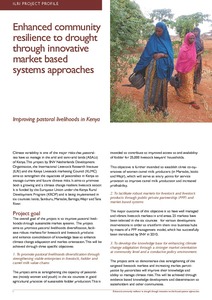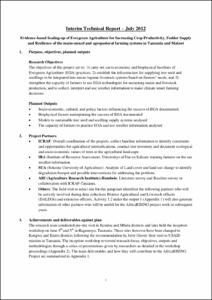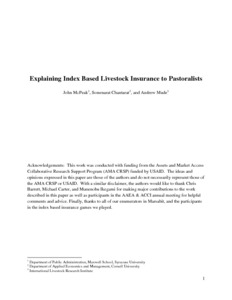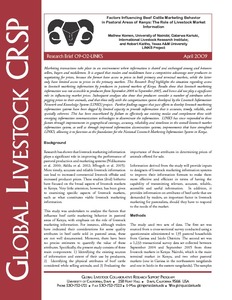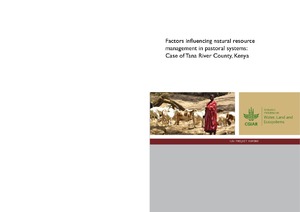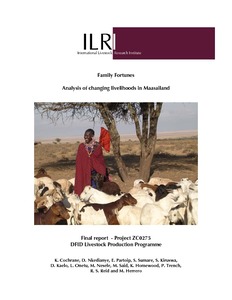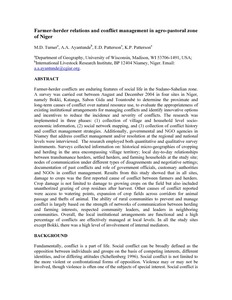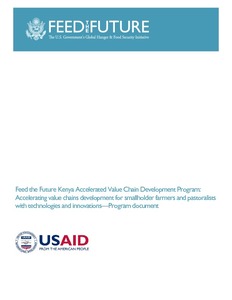Evidence-based scaling-up of evergreen agriculture for increasing crop productivity, fodder supply and resilience of the maize-mixed and agro-pastoral farming systems in Tanzania and Malawi
Evidence-based Scaling-up of Evergreen Agriculture for Increasing Crop Productivity, Fodder Supply and Resilience of the maize-mixed and agropastoral farming systems in Tanzania and Malawi Interim technical report July 2012
Extent and implications of incorrect offspring-sire relationships in pastoral production system in Kajiado District, Kenya
The aim of this study was to evaluate accuracy of farmer's paternity identification which determines success of future breed selection and hence genetic gain. Paternity of 269 Orma/zebu and Sahiwal/zebu calves was evaluated using genetic markers and the likelihood based method. Results indicate that only 6.7% farmer alleged paternities were confirmed, 88% parent-offspring relationships were rejected and 18% parent-offspring relationships were undetermined. However, 82% of offsprings were assigned at least 80% confident paternities to one of the sampled candidate males.
Explaining index based livestock insurance to pastoralists
Livestock production in arid and semi-arid rangelands is a risky enterprise. Covariate risk of catastrophic livestock loss due to drought is the most critical uninsured risk facing livestock producers. These losses can lead to persistent poverty. We are trying to design an index based livestock insurance (IBLI) program as a viable means to help pastoralists in northern Kenya manage such covariate risk of livestock losses due to drought.
Factors influencing beef cattle marketing behavior in pastoral areas of Kenya: the role of livestock market information
Marketing transactions take place in an environment where information is shared and exchanged among and between sellers, buyers and middlemen. It is argued that traders and middlemen have a competitive advantage over producers in negotiating for prices, because the former have access to prices in both primary and terminal markets, while the latter only have limited access to prices in the primary markets. This Research Brief highlights the situation regarding access to livestock marketing information by producers in pastoral markets of Kenya.
Factors influencing natural resource management in pastoral systems: Case of Tana River County, Kenya
Family fortunes: analysis of changing livelihoods in Maasailand
Farmer-herder relations and conflict management in agro-pastoral zone of Niger
Farmer-herder conflicts are enduring features of social life in the Sudano-Sahelian zone.
A survey was carried out between August and December 2004 in four sites in Niger,
namely Bokki, Katanga, Sabon Gida and Tountoubé to determine the proximate and
long-term causes of conflict over natural resource use, to evaluate the appropriateness of
existing institutional arrangements for managing conflicts and identify innovative options
and incentives to reduce the incidence and severity of conflicts. The research was
Feed the Future Kenya Accelerated Value Chain Development Program: Accelerating value chains development for smallholder farmers and pastoralists with technologies and innovations—Program document
Fodder bank: Improving the nutrition of cattle in the subhumid zone of West Africa
ILCA acknowledged the potential for increased animal agriculture in the subhumid zone of West Africa by establishing a research base at Kaduna in northern Nigeria. FulBe agropastoralists were selected at the target group because they own most of the cattle in the zone and cattle are the predominant livestock, at least in terms of biomass and traded products. After consultation with experts, farm surveys, and a simulation analysis, ILCA chose to focus the research on overcoming the dry-season nutrition constraint.
Fodder banks: For pastoralists or farmers
Outlines the principles and practices of fodder-bank establishment and management in the sub-humid zones of West Africa. Summarises data that indicate the benefit of fodder banks to subsequent crops.

